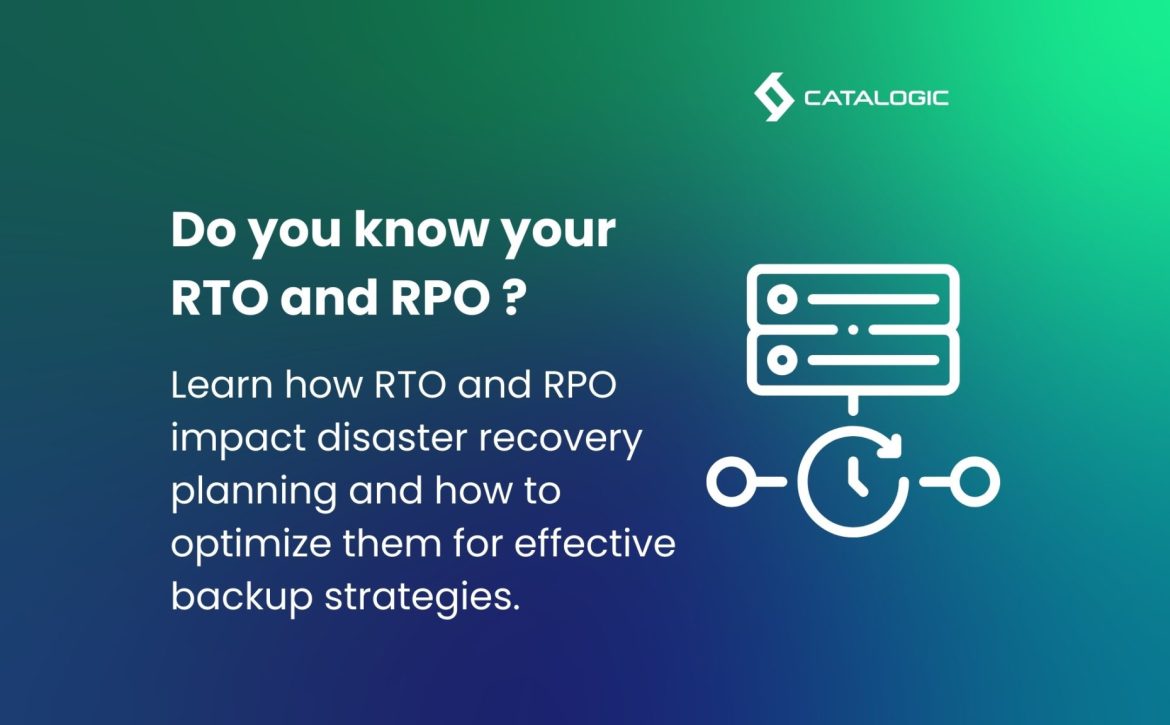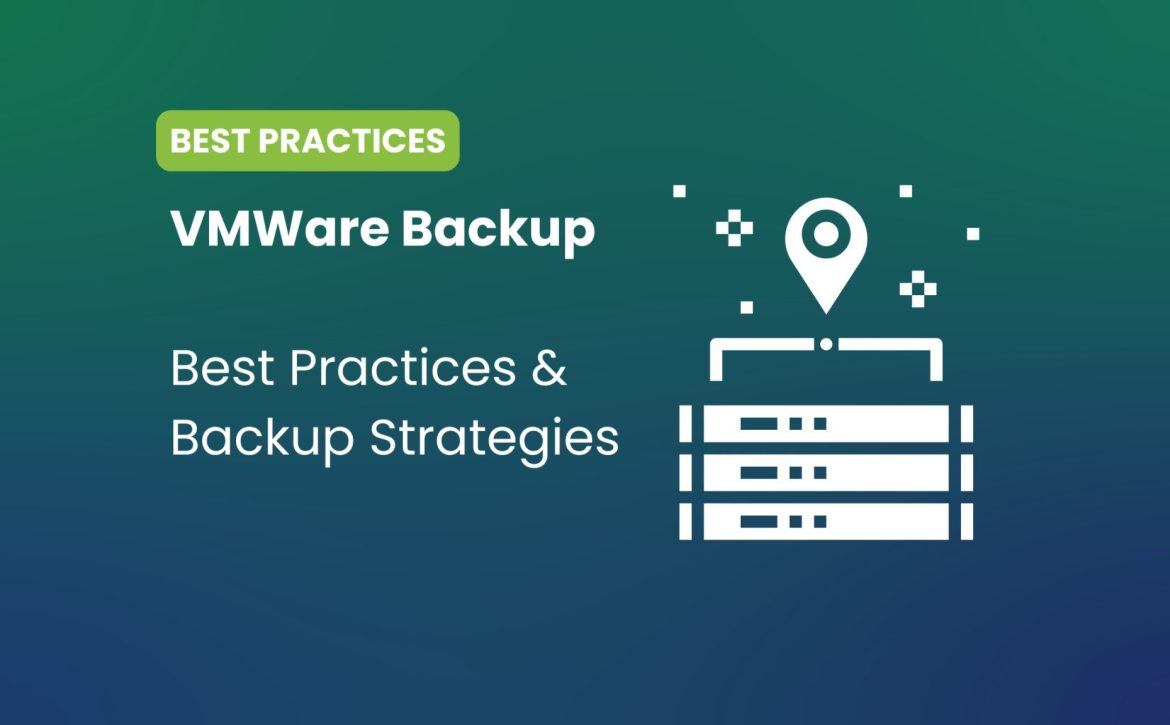Mastering RTO and RPO: Metrics Every Backup Administrator Needs To Know
How long can your business afford to be down after a disaster? And how much data can you lose before it impacts operations? For Backup Administrators, these are critical questions that revolve around two key metrics: Recovery Time Objective (RTO) and Recovery Point Objective (RPO). Both play a crucial role in disaster recovery planning, yet they address different challenges—downtime and data loss.
By the end of this article, you’ll understand how RTO and RPO work, their differences, and how to use them to create an effective backup strategy.
What is RTO (Recovery Time Objective)?
Recovery Time Objective (RTO) is the targeted duration of time between a failure event and the moment when operations are fully restored. In other words, RTO determines how quickly your organization needs to recover from a disaster to minimize impact on business operations.
Key Points About RTO:
- RTO focuses on time: It’s about how long your organization can afford to be down.
- Cost increases with shorter RTOs: The faster you need to recover, the more expensive and resource-intensive the solution will be.
- Directly tied to critical systems: The RTO for each system depends on its importance to the business. Critical systems, such as databases or e-commerce platforms, often require a shorter RTO.
Example Scenario:
Imagine your organization experiences a server failure. If your RTO is 4 hours, that means your backup and recovery systems must be in place to restore operations within that time. Missing that window could mean loss of revenue, damaged reputation, or even compliance penalties.
Key takeaway: The shorter the RTO, the faster the recovery, but that comes at a higher cost. It’s essential to balance your RTO goals with budget and resource constraints.
What is RPO (Recovery Point Objective)?
Recovery Point Objective (RPO) defines the maximum acceptable age of the data that can be recovered. This means RPO focuses on how much data your business can afford to lose in the event of a disaster. RPO answers the question: How far back in time should our backups go to ensure acceptable data loss?
Key Points About RPO:
- RPO measures data loss: It determines how much data you are willing to lose (in time) when recovering from an event.
- Lower RPO means more frequent backups: To minimize data loss, you’ll need to perform backups more often, which requires greater storage and processing resources.
- RPO varies by system and data type: For highly transactional systems like customer databases, a lower RPO is critical. However, for less critical systems, a higher RPO may be acceptable.
Example Scenario:
Suppose your organization’s RPO is 1 hour. If your last backup was at 9:00 AM and a failure occurs at 9:45 AM, you would lose up to 45 minutes of data. A lower RPO would require more frequent backups and higher storage capacity but would reduce the amount of lost data.
Key takeaway: RPO is about minimizing data loss. The more critical your data, the more frequent backups need to be to achieve a low RPO.
Key Differences Between RTO and RPO
While RTO and RPO are often used together in disaster recovery planning, they represent very different objectives:
- RTO (Time to Recover): Measures how quickly systems must be back up and running.
- RPO (Amount of Data Loss): Measures how much data can be lost in terms of time (e.g., 1 hour, 30 minutes).
Comparison of RTO and RPO:
| Metric | RTO | RPO |
| Focus | Recovery Time | Data Loss |
| What it measures | Time between failure and recovery | Acceptable age of backup data |
| Cost considerations | Shorter RTO = Higher cost | Lower RPO = Higher storage cost |
| Impact on operations | Critical systems restored quickly | Data loss minimized |
Why Are RTO and RPO Important in Backup Planning?
Backup Administrators must carefully balance RTO and RPO when designing disaster recovery strategies. These metrics directly influence the type of backup solution needed and the overall cost of the backup and recovery infrastructure.
1. Aligning RTO and RPO with Business Priorities
- RTO needs to be short for critical business systems to minimize downtime.
- RPO should be short for systems where data loss could have severe consequences, like financial or medical records.
2. Impact on Backup Technology Choices
- A short RTO may require advanced technologies like instant failover, cloud-based disaster recovery, or virtualized environments.
- A short RPO might require frequent incremental backups, continuous data protection (CDP), or automated backup scheduling.
3. Financial Considerations
- Lower RTOs and RPOs demand more infrastructure (e.g., more frequent backups, faster recovery solutions). Balancing cost and risk is essential.
- For example, cloud backup solutions can reduce infrastructure costs while meeting short RPO/RTO requirements.
Optimizing RTO and RPO for Your Organization
Every business is different, and so are its recovery needs. Backup Administrators should assess RTO and RPO goals based on business-critical systems, available resources, and recovery costs. Here’s how to approach optimization:
1. Evaluate Business Needs
- Identify the most critical systems: Prioritize based on revenue generation, customer impact, and compliance needs.
- Assess how much downtime and data loss each system can tolerate. This will determine the RTO and RPO requirements for each system.
2. Consider Backup Technologies
- For short RTOs: Consider using high-availability solutions, instant failover systems, or cloud-based recovery to minimize downtime.
- For short RPOs: Frequent or continuous backups (e.g., CDP) are needed to ensure minimal data loss.
3. Test Your RTO and RPO Goals
- Perform regular disaster recovery drills: Test recovery plans to ensure your current infrastructure can meet the set RTO and RPO.
- Adjust as needed: If your testing reveals that your goals are unrealistic, either invest in more robust solutions or adjust your RTO/RPO expectations.
Real-Life Applications of RTO and RPO in Backup Solutions
Different industries have varying requirements for RTO and RPO. Here are a few examples:
1. Healthcare Industry
- RTO: Short RTO for critical systems like electronic health records (EHR) is necessary to ensure patient care is not disrupted.
- RPO: Minimal RPO is required for patient data to avoid data loss, ensuring compliance with regulations like HIPAA.
2. Financial Services
- RTO: Trading platforms and customer-facing applications must have extremely low RTOs to avoid significant financial loss.
- RPO: Continuous data backup is often required to ensure that no transaction data is lost.
3. E-commerce
- RTO: Downtime directly impacts revenue, so e-commerce platforms require short RTOs.
- RPO: Customer data and transaction history must be backed up frequently to prevent significant data loss.
Key takeaway: Different industries require different RTO and RPO settings. Backup Administrators must tailor solutions based on the business’s unique requirements.
How to Set Realistic RTO and RPO Goals for Your Business
Achieving the right balance between recovery speed and data loss is key to building a solid disaster recovery plan. Here’s how to set realistic RTO and RPO goals:
1. Identify Critical Systems
- Prioritize systems based on their impact on revenue, customer experience, and compliance.
2. Analyze Risk and Cost
- Shorter RTO and RPO settings often come with higher costs. Assess whether the cost is justified by the potential business impact.
3. Consider Industry Regulations
- Some industries, like finance and healthcare, have strict compliance requirements that dictate maximum allowable RTO and RPO.
4. Test and Adjust
- Test your disaster recovery plan to see if your RTO and RPO goals are achievable. Adjust the plan as necessary based on your findings.
Conclusion
Understanding and optimizing RTO and RPO are essential for Backup Administrators tasked with ensuring data protection and business continuity. While RTO focuses on recovery time, RPO focuses on acceptable data loss. Both metrics are essential for creating effective backup strategies that meet business needs without overextending resources.
Actionable Tip: Start by evaluating your current RTO and RPO settings. Determine whether they align with your business goals and make adjustments as needed. For more information, explore additional resources on disaster recovery planning, automated backup solutions, and risk assessments.
Ready to achieve your RTO and RPO goals? Get in touch with our sales team to learn how DPX and vStor can help you implement a backup solution tailored to your organization’s specific needs. With advanced features like instant recovery, granular recovery for backups, and flexible recovery options, DPX and vStor are designed to optimize both RTO and RPO, ensuring your business is always prepared for the unexpected.

